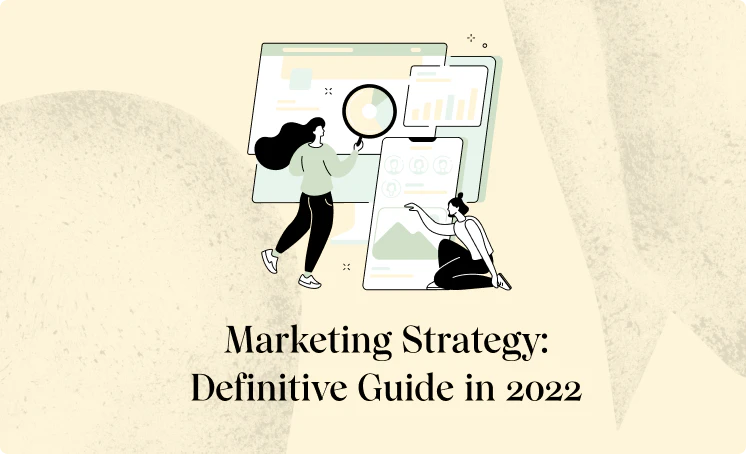Introduction
If you haven’t heard by now, email marketing is a highly lucrative strategy.
For every dollar you spend on email marketing, you can expect to get $42 back.
But success with email marketing doesn’t happen on its own! You won’t automatically generate a 42x ROI by sending out any random email.
Want to increase your client acquisition rate and become more profitable? Here are 37 email marketing tips you should try out!
37 Email Marketing Tips You Should Use In 2021
1. USE PSYCHOLOGY WHEN WRITING YOUR EMAILS
When writing your emails, you can keep some psychology basics in mind to improve engagement, clickthrough rate, and conversions.
Some examples of powerful psychological tools include:
- Social proof: add testimonials from your happy customers or tell customer stories
- Exclusivity: make offers that are only available to your email list, which adds a hint of exclusivity
- Reciprocity: if you help your audience and provide value, they’ll become more loyal to your brand
- Scarcity: add timers at the top of emails that mention limited time deals
Remember that your list isn’t just a large chunk of people – it’s made up of individuals.
2. TEST ALL YOUR SUBJECT LINES BEFORE DOING THE FINAL DELIVERY
Did you know that most email marketing software allows you to A/B test your subject lines before you deliver your email?
This will entail sending the email to a small chunk of your list. Half of them receive one subject line, whereas the other half receives a second subject line.
Then, your email marketing software will automatically send your email to the remaining people in your list using the subject line with the most opens.
When choosing your email marketing software, make sure it has this feature.
3. CUSTOMIZE YOUR SENDER’S FIELD WITH A REAL NAME
Instead of using your brand’s name as the sender, try using a real person’s name.
This can be your name, the name of your community manager, or anyone else you’d like to represent your brand in your emails.
Having a real name instead of a brand makes your emails more personable.
You can include your brand name, too! For example, Mid-Day Squares uses the sender’s field “Lez at Mid-Day Squares”:
This reminds your audience that there is a real human behind the brand, which makes it easier to connect to you.
4. PERSONALIZE THE EMAILS
Most email marketing software will allow you to add personalization fields.
Often, these fields will use the reader’s first name so that it seems like you’re talking to them. This can be in the subject line, or in the body of the email.
But you can use other personalization tags – as long as you have the information.
For example, if you know your readers’ birthdays, you can send them a fun gift when that day comes!
5. USE POWER WORDS
Power words are an amazing tool for sales copy. These words incite an emotional response in people and add some flavor to your emails.
Some examples of power words include:
• Fascinating
• Bold
• Essential
• Budget
• Breathtaking
• Ridiculous
• Seriously
• Inspiring
• Indulgent
• Guaranteed
• Mistake
• Awesome
Try these out both in your subject line and in your email body itself to see the effect it has on your audience.
6. TRY THE DOUBLE OPENS STRATEGY
When you send your email, only a fraction of your list will typically open it.
How many people open it depends on how engaged your current list is, but you can improve those numbers by trying out a double open campaign.
With a double open campaign, you resend the email to everyone in your list who didn’t open the original.
The new email uses a different subject line.
Try sending it one to three days after the original send date and see how many more people open up!
7. EXPERIMENT WITH NUMBERS AND STATS IN YOUR SUBJECT LINE
There’s something intriguing about numbers and statistics.
If this is relevant to the email you’re sending, try adding an interesting number or statistic in your subject line to catch your audience’s attention.
You can try A/B testing to see whether or not this number improves your open rates.
8. MAKE YOUR SUBJECT LINES MOBILE-FRIENDLY
Did you know that mobile devices are the most popular way to read emails? 42% of all emails get opened via a smartphone or a tablet.
So you should keep your mobile users in mind.
Mobile devices don’t display as much text in your subject line as desktops.
So if your subject line is too long, your mobile readers won’t see the entire thing!
Take a look at the subject line from kate McKibbin below:
We can only read the first part, and the rest trails off. The email could have been more enticing if we could see the entire subject line.
You can still test longer subject lines to see what works best with your audience! But make sure you actually test this instead of relying only on long subject lines.
9. USE AN OPEN LOOP IN YOUR SUBJECT LINE
An open loop is a way to add curiosity and suspense to entice more people to open your email.
Your subject line opens the loop, and the text in your email should satisfy the reader’s curiosity by closing this loop.
Here’s an example from email marketer Tarzan Kay:
“This is not THAT” begs the question: what is “this”?, and what is it not?
Here’s another example of an open loop from Tarzan:
We’re wondering what exactly is making her feel naughty.
Keep in mind that you should always close the loop by providing a conclusion to what your subject line hinted at.
If you don’t close the loop, your readers will see your brand as clickbaity, so avoid this at all costs.
10. CUSTOMIZE THE PREVIEW TEXT
Readers can see preview text before they open an email, right next to the subject line.
If you don’t customize this, it will automatically use the first few sentences in your email.
But did you know that you can customize the preview text? In fact, you should put as much effort in the preview text as you do with your subject line!
The preview text can tickle the curiosity of your readers even more than the subject line, or it can add onto what the subject line is trying to say.
Make the most use of all the copy you get, especially since subject lines don’t give you a ton of space to communicate.
11. AVOID ALL CAPS IN YOUR SUBJECT LINE
All caps can definitely grab a reader’s attention in their inbox.
But getting their attention won’t necessarily get them to open your email.
If you want to use caps, make sure you do so sparingly. You can emphasise a certain section of your subject line to bring attention to it instead of putting everything in all caps.
When you put emphasis on everything, you’re actually emphasising nothing at all.
12. TEST OUT EMOJIS
Emojis can communicate a ton of information only using a single character.
So not only can they attract attention, they can also help you shorten your subject line while still communicating something interesting.
Once again, you should test out emojis before relying on them with your audience. See how your audience responds with subject lines that use emojis compared to those that don’t.
Make sure not to go overboard with emojis, either. It’s not a great look and will seem desperate.
13. FOCUS ON GETTING MORE ENGAGEMENT
You can increase your deliverability – the percentage of emails that make it to the inbox – by improving your engagement.
The higher your open rate, clickthrough rate, and response rate, the more the email services like Gmail or Yahoo will detect that you’re a reliable brand that provides value.
This means you’ll be less likely to land in the spam box.
One way to improve your engagement is by cleaning your list at least once a year. This involves deleting cold subscribers who haven’t opened your emails in 3 months or more.
Yes – you can delete old subscribers! Subscribers who are completely disengaged from your email list are dead weight and are dragging down your engagement metrics.
You can send 2-3 emails to let them know you will be removing them if they do not confirm that they want to stay on your list.
14. CHOOSE A SINGLE CTA
Your emails should be focused on a single call-to-action.
However, this doesn’t mean you should only add one link in one place. Your CTA buttons or links can appear in more than one spot throughout the email.
What it does mean is that your email should have a single purpose. If you add more than one CTA, your audience may get confused and distracted, which will lower your clickthrough rate and conversions.
So, before you write your email, decide what its purpose will be, and stick to it.
Do you want people to purchase a specific product for a sale, or read a blog post you just published?
Maybe you want to run a survey and need the maximum number of people to participate.
Here’s an example that showcases that you can have more than one instance of the same CTA:
Both links lead to the same sales page.
Keep in mind that you can add other calls to action in your PS section (covered down below).
15. ADD CONTEXT TO YOUR CTA LINKS
Instead of relying on generic copy for your CTA links, try adding context to your copy.
Notice, in the example below, how each instance of the CTA uses different copy:
The copy is tied directly to what the email is saying and is providing context.
They are telling you that:
• This is a brand new masterclass
• The masterclass will provide as much valuable, actionable information as previous masterclasses
• You can sign up for free
Even if the reader were to skim this email, they would get enough information just by reading the links.
16. ADD A PS SECTION
A PS section is located below your signature. It can be used for several purposes.
One example is to resume what was said in your email if this email is particularly long. That’s because some readers will prefer to skip to the end and just want to get to the point.
Let’s take a look at the email covered in the previous section. If we scroll down to the bottom, you’ll see that the PS section adds another CTA and gives a quick recap of the point of this email.
You can also use the PS section to add evergreen CTAs.
What does this mean? Essentially, after every email, you can offer the same CTA, no matter what the email is about.
It acts as a second signature of sorts.
Here’s an example from Joel Erway, who uses the PS section to convert readers who are ready to work with him without going the hard sell way:
17. OFFER VALUE IN YOUR EMAILS (YOUR AUDIENCE COMES FIRST!)
No matter what you do, always put your audience first.
Your email marketing strategy wouldn’t be worth anything if it wasn’t for your subscribers. This means you should do everything you can to provide the value they’re looking for.
So before you start selling, make sure to give value first.
Some ways you can give value include:
• Helpful tips and tricks
• Free downloads
• Personal stories
• Case studies
• Exclusive interviews
• Coupon codes
What value you give depends on what your audience expects. This will vary from audience to audience, but keep in mind that someone who subscribed to your list for a 10% discount code won’t want the same things as someone who subscribed to read all your stories.
18. SELL BENEFITS, NOT FEATURES
Here’s the truth: no one cares about the nitty-gritty features of your products or services.
What people really care about is what those features mean for them in terms of benefits.
The more you can provide benefits instead of features, the easier it will be for your readers to imagine themselves using your products or services in a good way.
For example, if you’re selling a robe, you could focus on the type of fabric and how it feels, but this would be features-driven only.
Knix combines both approaches by selling the idea of feeling pampered at home, just like you would at the spa:
If readers click on this image, they’ll be able to find out about the features of this robe, which include the fact that it’s waffle-knit, lightweight, and includes oversized pockets.
But what will make them click or purchase is how this robe can make them feel.
19. MAKE SURE YOUR EMAIL AND LANDING PAGE COPY MATCH
If you’re sending your readers to a landing page, the tone of voice and messaging should match.
People are clicking on your CTA because your email convinced them to. If the landing page doesn’t match what the email is saying, they no longer have a reason to stay on your page.
So if you’re advertising a sale for a specific product, don’t link to a general product page!
20. DON’T USE GENERIC TEMPLATES
There are tons of email templates available online. Whether these templates are highly designed for eCommerce purposes, or mad-lib style text templates that you fill in with your own information, there’s something for everyone.
But don’t fall into the trap of relying too much on generic templates.
This is especially true for text templates. What makes your emails unique is you and your brand, and using a generic template removes that aspect.
21. DEVELOP YOUR OWN TONE OF VOICE
In order to stand out from other brands and be memorable in your own way, make an effort to develop your own tone of voice in your emails.
You can take inspiration from other email marketers, but don’t try to copy someone else directly.
Your tone of voice should fit with what your audience expects from you and what type of people you’re targeting. For example, it wouldn’t make sense to use a humorous, sarcastic tone with convervative women in their sixties.
22. MAKE YOUR EMAILS SKIMMABLE
When writing emails, keep in mind that you are writing for the web.
People don’t read online the same way they do with other texts.
While some people will read every word you write, others will skim the important bits and fast-forward to the end.
This means you should format your emails in a way that makes them skimmable and easy on the eyes.
Here are some ways you can do this:
• Use larger font sizes
• Keep emails narrow instead of full-width
• Use short paragraphs of one or two sentences max (keep it at one if possible)
• Bold important words
• Use images (but sparingly, since too many images can land you in the promotion folder)
Tarzan Kay does this very well in her emails:
Notice how narrow the paragraphs are. This email is incredibly easy to skim.
23. MAKE IT EASY TO UNSUBSCRIBE
Here’s something not everyone will tell you: it’s a good thing when someone unsubscribes from your list.
How does that make sense? Well, if someone unsubscribes, it means they were no longer interested in what you had to offer.
They probably weren’t going to buy anything anyway.
So you should make it as easy as possible to unsubscribe to avoid frustration.
This means adding an unsubscribe link at the bottom of every email, and not trying to hide it amidst a bunch of other links.
Some email marketers only add an ‘update your info’ link, which gives you the option to unsubscribe once you click, but it’s better to have an actual ‘unsubscribe’ link too.
If people struggle to find the ‘Unsubscribe’ button, they’re more likely to mark you as spam so they can stop receiving your emails.
24. DON’T BUY A LIST
When you’re first growing your email list, it can be tempting to purchase a list and upload this to your email marketing tool.
Not only is this against the terms of use for most email marketing software (and illegal in several countries and regions, like Europe with the GDPR laws), but it’s simply bad practice.
People in a purchased list didn’t sign up to hear from you. So if they start receiving marketing emails from you, they could mark you as spam.
This isn’t good for your deliverability and domain authority.
Instead, grow your list using consensual opt-in methods.
25. SHOW YOUR PERSONALITY
Yes, you’re representing your brand, but you’re also a person.
People like connecting with people. So you should let your subscribers get to know you!
Don’t be afraid to let your personality shine through your email copy. This will help your audience connect with you on a deeper level, which will make them more loyal to your brand.
And loyal subscribers are those who convert the best.
26. KEEP MOBILE DEVICES IN MIND WITH YOUR DESIGN
If you’re using highly designed emails, always test on mobile devices before you launch your campaign.
If something looks odd or isn’t formatted correctly, you could lose out on a bunch of conversions.
Some emails are formatted in a way that forces mobile users to drag the email back and forth to get a complete picture of what’s going on.
This doesn’t provide a great experience for your readers!
27. ADD ALT-TEXT TO YOUR BUTTONS AND IMAGES
Alt-text is a short description for your images that will show up when your images don’t load.
Some users don’t load images to save their Internet data, or simply because they are in a low signal area.
But if your images are important to the context of your email, you don’t want these readers to miss out.
28. TEST DIFFERENT TIMES AND DAYS WHEN SENDING EMAILS TO IMPROVE ENGAGEMENT
When should you send your emails?
Is there a specific day in the week or time of the day that is proven to be better?
There is some data to suggest that there are some times that are better than others. Coschedule gathered this data together and it looks like this:
However, keep in mind that the best results for your list will vary.
The best way to know what the best days and times are for your audience is to test it out.
Try sending emails on different days of the week and at various times, then look at your metrics to see which emails had the best engagement.
You don’t just want to look at email opens – for instance, maybe more people open your emails in the morning, but they don’t end up buying. On the other hand, if you have lower open rates in the evening, but end up with way more purchases, this could mean that you should send promotional emails in the evening instead of the morning.
29. PLAN AN EMAIL MARKETING CALENDAR
One of the best ways to get results from your email marketing efforts is to set up a consistent content calendar.
If you email people once a week, they’ll start expecting that email. If you email every day, you should stick to once a day.
So instead of sporadically sending emails whenever you feel like it, start creating an email marketing calendar to plan out every email you are going to send.
You can also use your calendar to vary the types of emails people are getting in a given week or month.
Plus, you can tie your email marketing calendar into your overall marketing strategy.
30. GET TO KNOW YOUR AUDIENCE
Your audience can get to know you, but the opposite is true.
Whenever possible, try to find ways to engage with your audience so you can get to know them.
For example, you can ask them to hit reply or click on specific links to provide more information about themselves.
These links can then automatically tag your subscribers to let you know what they clicked.
When you know more about your subscribers, you can send more relevant emails and promotions their way.
31. LET YOUR READERS KNOW HOW TO WHITELIST YOUR EMAILS
Many promotional emails will automatically end up in the promotions tab…
… or even in the dreaded spam folder.
When you send a welcome email to new subscribers, let them know that they can whitelist your email address, and tell them how they can do so.
You can let them know in the main copy, or in the PS section:
32. SEGMENT YOUR LIST
Guess what – not everyone in your email list wants the same things!
The great thing about email marketing software is that you can segment your list based on almost anything you want.
You can create segments for:
• Different audience demographics
• Types of people in your audience (for example, if you service both service providers and course creators, or dog owners and cat owners)
• People who purchased certain products
• People who showed interest in a particular topic
• People who downloaded a specific lead magnet
The more you segment your list, the more specific you can get with your email marketing, which means you can offer more relevant content and promotions.
And when you provide more relevant promotions, people are more likely to stick around.
33. ADD A SIGNUP LINK FOR YOUR EMAIL LIST IN YOUR PERSONAL EMAILS
One way you can grow your email list is by making it easy for people to subscribe in the first place.
Make sure to add a link to subscribe to your newsletter in your personal email and business email.
It doesn’t have to be a generic ‘subscribe to my list’ link. Instead, you can provide a link to your lead magnet.
This will allow you to convert people into subscribers who may not ever have found your list in other ways.
34. START A SOCIAL MEDIA CAMPAIGN FOR LIST GROWTH
Social media can be a powerful tool to grow your email list.
Next time you want to give a boost to your subscriber count, consider planning a social media campaign specifically to get more people to opt in to your newsletter.
There are so many ways you can do this, including:
• Run a contest: Offer something juicy that is only available to email subscribers, so people will need to opt-in if they want to be eligible to win.
• Run a 5-day challenge: 5-day challenges are great to help your audience achieve a desirable outcome in a short amount of time, for free! These challenges can then lead into a paid offer that helps your challenge takers achieve even deeper results.
• Promote a quiz: Quizzes can help you entertain and segment your audience at the same time.
• Run Facebook ads: If you have a lead magnet that’s proven to convert, you can multiply your results by running a Facebook ad campaign.
35. ADD EXIT-INTENT POPUPS TO YOUR WEBSITE
Exit-intent popups get automatically triggered when people move towards the ‘X’ in their browser.
This popup can provide an offer to sign up to your email list. This offer can be a lead magnet or a special promotion, like a 10% off coupon.
You can use tools like GetSiteControl to create great-looking popups without writing a single line of code.
36. ADD A SUBSCRIPTION BOX TO YOUR WEBSITE FOOTER
You don’t need to rely just on your popups to convert website visitors into email subscribers.
On your website footer, you can add a box to invite people to subscribe – you can also provide your best lead magnet as an incentive.
Make sure you don’t rely on generic copy like “Subscribe to stay updated”. Explain how your audience can benefit from signing up to your email list.
37. TRACK YOUR METRICS
Finally, you should always keep track of your metrics.
Without a good handle on your metrics, it will be difficult to know whether or not you are improving.
Check your metrics at least every month – if you’re sending out several emails each week, you should check them weekly, too.
Based on what you see, make plans to optimize your email marketing performance.
For example, if your open rates are lowering, maybe you need to find a way to re-engage your subscribers using an engagement campaign (like a contest).
Or maybe it’s because your emails are landing in the spam folder and you need to improve your deliverability.
Be proactive with your metrics and try to improve them, even when they aren’t falling, so that you can keep growing your email marketing ROI.
Desired Outcome
When you use email marketing effectively, you can achieve so much for your business, including:
• A recurring list of loyal customers
• A better return on investment
• Learn more about your audience to serve them better
• Improved conversion rates
• And so much more
Email marketing can complement your other marketing channels to fill in the gaps in your strategy.
Start Using These Email Marketing Tips To Boost Your Business
Email definitely isn’t dead yet. Weekly signups are actually going up and have increased by 34.9% since March of 2020. If you haven’t started using email marketing in your business, it’s not too late.
Need some help getting started with email marketing? Get in touch to get your free marketing plan!
Confidentially partner with an Email Marketing Agency that has generated over $1,649,692 in attributable revenue for their clients.














.webp)

.webp)








.webp)









































.webp)






